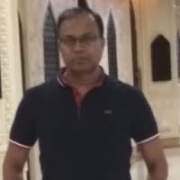

Teradata and Dremio are powerful solutions in the data processing and analytics category. Teradata seems to have the upper hand due to its extensive features and scalability, although it faces cost and complexity issues, whereas Dremio is praised for ease of use and integration.
Features: Teradata is recognized for its scalability, parallel processing, and advanced analytics capabilities like automatic stats collection and workload management. It offers comprehensive analytics and is known for rapid data processing. Dremio excels in data lineage and provenance capabilities, making it highly efficient in integrating various databases. Its flexibility in managing and visualizing data is also a notable strength.
Room for Improvement: Teradata is challenged by its high cost and complexity, especially with unstructured data. It needs better integration with big data platforms and improved scalability. Dremio users identify the need for enhanced query execution, particularly with large, nested queries. It also faces integration issues with some systems and requires better documentation and support options.
Ease of Deployment and Customer Service: Teradata provides diverse deployment options across on-premises, private cloud, and hybrid environments, though it has complexity that necessitates expert handling. Its customer service is generally well-rated, though response times could improve. Dremio typically operates in cloud and hybrid setups, offering deployment flexibility but faces certain integration challenges. Customer service reliability varies, indicating potential for enhanced support responsiveness.
Pricing and ROI: Teradata has a high total cost of ownership, often justified by significant ROI for large organizations. Its pricing models are evolving for more cost-effective solutions. Dremio is relatively cost-effective compared to solutions like Snowflake, though licensing costs for its community version might limit scalability. Both solutions provide substantial ROI, serving different financial and performance requirements.


Dremio is a data analytics platform designed to simplify and expedite the data analysis process by enabling direct querying across multiple data sources without the need for data replication. This solution stands out due to its approach to data lake transformation, offering tools that allow users to access and query data stored in various formats and locations as if it were all in a single relational database.
At its core, Dremio facilitates a more streamlined data management experience. It integrates easily with existing data lakes, allowing organizations to continue using their storage of choice, such as AWS S3, Microsoft ADLS, or Hadoop, without data migration. Dremio supports SQL queries, which means it seamlessly integrates with familiar BI tools and data science frameworks, enhancing user accessibility and reducing the learning curve typically associated with adopting new data technologies.
What Are Dremio's Key Features?
What Benefits Should Users Expect?
When evaluating Dremio, potential users should look for feedback on its query performance, especially in environments with large and complex data sets. Reviews might highlight the efficiency gains from using Dremio’s data reflections and its ability to integrate with existing BI tools without significant changes to underlying data structures. Also, check how other users evaluate its ease of deployment and scalability, particularly in hybrid and cloud environments.
How is Dremio Implemented Across Different Industries?
Dremio is widely applicable across various industries, including finance, healthcare, and retail, where organizations benefit from rapid, on-demand access to large volumes of data spread across disparate systems. For instance, in healthcare, Dremio can be used to analyze patient outcomes across different data repositories, improving treatment strategies and operational efficiencies.
What About Dremio’s Pricing, Licensing, and Support?
Dremio offers a flexible pricing model that caters to different sizes and types of businesses, including a free community version for smaller teams and proof-of-concept projects. Their enterprise version is subscription-based, with pricing varying based on the deployment scale and support needs. Customer support is comprehensive, featuring dedicated assistance, online resources, and community support.
Teradata is a scalable data analytics platform designed to meet enterprise demands for large-scale data management and processing, focusing on performance, scalability, and security for complex query executions.
As a leading data warehousing solution, Teradata integrates advanced analytics enabling organizations to derive insights from massive datasets. It supports high-volume data workloads with its architecture optimized for analytical queries. Users benefit from its robust scalability, allowing seamless expansion as data grows. Teradata's SQL engine is compatible with a wide range of data types, ensuring flexibility in data analysis. With advanced security measures, it protects sensitive data across various environments, providing peace of mind to users handling critical information.
What are the most important features of Teradata?Teradata is widely used in industries like finance, telecommunications, and healthcare, where data-driven decisions are critical. Companies leverage its robust analytics capabilities to enhance customer experiences, streamline operations, and ensure compliance with regulatory requirements. In these sectors, quick access to data insights can significantly impact competitive advantage.
We monitor all Cloud Data Warehouse reviews to prevent fraudulent reviews and keep review quality high. We do not post reviews by company employees or direct competitors. We validate each review for authenticity via cross-reference with LinkedIn, and personal follow-up with the reviewer when necessary.